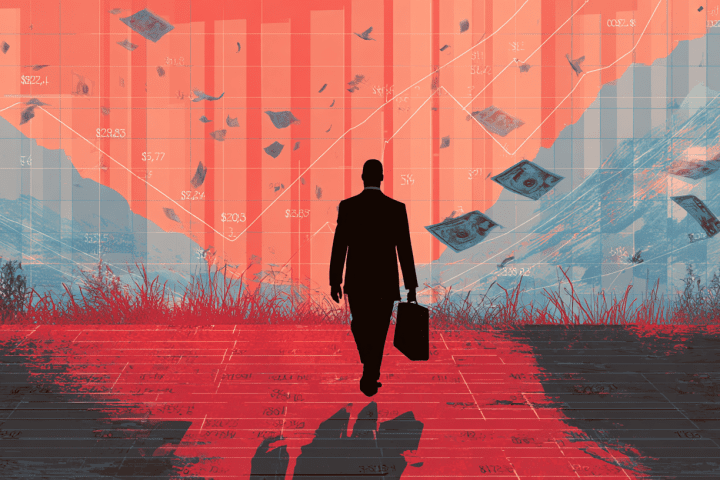A Century Already Marked by Economic Turmoil
The 21st century, despite being only a quarter complete, has already witnessed several devastating financial crises that have reshaped economies, destroyed wealth, and fundamentally altered how we think about financial regulation and systemic risk. From the dot-com bubble burst in 2000 to the global financial crisis of 2008, the European sovereign debt crisis, and most recently the economic disruption caused by the COVID-19 pandemic, each crisis has revealed vulnerabilities in our financial systems and provided painful but valuable lessons.
These crises share common threads—excessive leverage, regulatory failures, interconnected risks that amplify shocks, and the dangerous assumption that “this time is different.” Yet each crisis also has unique characteristics reflecting the evolving nature of global finance, technology, and economic structures. Understanding these events, extracting their lessons, and applying that knowledge to forecast future vulnerabilities represents one of the most important challenges facing policymakers, investors, and citizens.
This article examines the major financial crises of the 21st century, identifies the key lessons they taught, explores why these lessons are often ignored or forgotten, and provides forecasts about potential future crises. By understanding past mistakes and recognizing emerging vulnerabilities, we can better prepare for inevitable future disruptions and potentially mitigate their severity.
The Dot-Com Bubble (2000-2002): When Irrational Exuberance Met Reality
The Rise and Crash
The 21st century began with the bursting of the dot-com bubble, which had inflated throughout the late 1990s as investors poured money into internet-related companies regardless of profitability or viable business models. Companies with little more than a “.com” domain name achieved billion-dollar valuations. The NASDAQ Composite, heavily weighted toward technology stocks, peaked in March 2000 before collapsing over 75% by October 2002.
This crash destroyed approximately $5 trillion in market value, bankrupted hundreds of companies, and triggered a mild recession. Workers who had joined startups for stock options found their compensation worthless. Investors who believed traditional valuation metrics no longer applied learned painful lessons about fundamental value.
Key Lessons Ignored and Remembered
The dot-com crash should have taught investors that fundamentals matter, that sustainable business models require paths to profitability, and that excessive valuations based on future potential rather than current reality end badly. While some learned these lessons, the pattern repeated with later speculative bubbles in cryptocurrencies, SPACs, and unprofitable tech companies in 2020-2021, suggesting the lessons fade quickly as new generations of investors emerge.
However, one positive outcome was the surviving internet companies—Amazon, Google, eBay—emerged stronger, having developed genuine business models. The crisis eliminated weak competitors and validated that while the internet would indeed transform commerce, the transformation would unfold more slowly and selectively than bubble-era enthusiasts imagined.
The Global Financial Crisis (2008-2009): Near-Collapse of the System
The Perfect Storm
The 2008 global financial crisis represents the most severe economic disruption since the Great Depression. Originating in the U.S. subprime mortgage market, the crisis spread globally through complex financial instruments, interconnected institutions, and the collapse of confidence. Major investment banks failed or required government bailouts, credit markets froze, and the global economy contracted sharply.
The crisis stemmed from multiple failures: predatory lending practices, inadequate regulation of shadow banking, rating agencies giving AAA ratings to toxic securities, excessive leverage throughout the financial system, and the false belief that housing prices could never decline nationally. When housing prices fell, the entire structure collapsed like dominoes.
Systemic Impact and Response
The crisis destroyed approximately $2 trillion in global economic growth and $10 trillion in household wealth. Unemployment in the United States peaked above 10%, with even higher rates in Europe. Governments and central banks responded with unprecedented interventions: massive bank bailouts, near-zero interest rates, quantitative easing programs purchasing trillions in assets, and fiscal stimulus packages.
These interventions prevented complete financial collapse but created long-lasting consequences:
- Central bank balance sheets: Expanded from hundreds of billions to trillions of dollars, creating ongoing debates about exit strategies and market distortions
- Government debt levels: Soared as bailouts and stimulus programs required massive borrowing, constraining future fiscal flexibility
- Wealth inequality: Increased as asset price inflation from quantitative easing primarily benefited asset owners while wage growth stagnated
- Political polarization: Intensified as anger over bank bailouts fueled populist movements across the political spectrum
Regulatory Reforms
The crisis prompted significant regulatory reforms, particularly the Dodd-Frank Act in the United States and Basel III international banking standards. These reforms increased capital requirements, created resolution mechanisms for failing institutions, and expanded regulatory oversight to previously unregulated sectors. However, debates continue about whether reforms went far enough or imposed excessive costs on the financial system.
The European Sovereign Debt Crisis (2010-2012): Currency Union Vulnerabilities
Structural Flaws Exposed
Following the 2008 crisis, attention shifted to Europe where the sovereign debt crisis revealed fundamental flaws in the eurozone structure. Countries sharing a common currency but lacking fiscal union found themselves trapped—unable to devalue currencies or independently conduct monetary policy while facing different economic conditions and debt burdens.
Greece, Ireland, Portugal, Spain, and Italy faced soaring borrowing costs as markets doubted their ability to service debts. The crisis raised existential questions about the euro’s survival. Only aggressive European Central Bank intervention, particularly ECB President Mario Draghi’s pledge to do “whatever it takes” to preserve the euro, stabilized the situation.
Austerity and Its Consequences
The response to Europe’s crisis differed from the U.S. approach. European institutions demanded fiscal austerity—sharp spending cuts and tax increases—as conditions for financial assistance. This austerity deepened recessions in affected countries, leading to unemployment rates exceeding 25% in Greece and Spain and creating a “lost decade” of economic growth.
The crisis taught lessons about currency unions requiring fiscal integration to function sustainably, the dangers of imposing pro-cyclical austerity during recessions, and how financial crises can quickly become political crises threatening regional integration. However, structural reforms to address underlying problems remain incomplete, leaving vulnerabilities that could re-emerge during future stress.
COVID-19 Economic Crisis (2020-2021): The Pandemic Shock
An Unprecedented Challenge
The COVID-19 pandemic created a unique economic crisis—not originating from financial system vulnerabilities but from deliberate economic shutdowns to control disease spread. Within weeks, unemployment rates spiked to levels not seen since the Great Depression, businesses closed en masse, and entire industries like hospitality and travel nearly ceased operating.
Unlike previous crises where demand collapsed due to financial constraints, COVID-19 created both supply and demand shocks simultaneously. Workers couldn’t work, consumers couldn’t spend even if they had money, and supply chains disrupted globally as factories closed and transportation halted.
The Response and Its Legacy
Governments and central banks deployed even more aggressive interventions than during 2008. Massive fiscal stimulus programs, including direct payments to citizens, extended unemployment benefits, and business support, injected trillions into economies. Central banks expanded balance sheets further through additional asset purchases while maintaining near-zero or negative interest rates.
These interventions successfully prevented the health crisis from becoming a prolonged economic depression. However, they created new challenges including elevated inflation as demand recovered faster than supply chains could adapt, massive government debt increases, and asset price inflation creating affordability crises in housing and other markets.
The Five Critical Lessons From 21st Century Crises
Examining these crises reveals recurring patterns and lessons that, if heeded, could help prevent or mitigate future disruptions:
- Excessive Leverage Amplifies Volatility: Every major crisis involved excessive borrowing creating fragility where small shocks cascade into system-wide failures; whether subprime mortgages, government debt, or margin trading in speculative assets, high leverage transforms manageable problems into catastrophes when asset values decline or credit conditions tighten
- Regulatory Arbitrage Creates Vulnerabilities: Financial innovation consistently outpaces regulation as actors find ways to take risks outside regulatory oversight; shadow banking, complex derivatives, and cryptocurrency markets demonstrate how risks migrate to less-regulated sectors where they accumulate undetected until crisis strikes
- Interconnection Spreads Contagion: Modern financial systems’ interconnectedness means problems in one sector or country rapidly spread globally; diversification provides less protection than assumed because correlations approach one during crises when everything declines simultaneously
- Central Bank Interventions Have Unintended Consequences: While crisis interventions prevented complete collapse, they created moral hazard by signaling that authorities will always rescue markets, encouraged risk-taking through sustained low rates, and contributed to wealth inequality through asset price inflation that primarily benefited the wealthy
- Early Warning Signs Are Ignored Until Too Late: Before every crisis, warning signs existed but were dismissed or rationalized away; whether rising housing prices disconnected from incomes, unsustainable sovereign debt trajectories, or speculative manias in particular assets, humans repeatedly convince themselves “this time is different” until reality intrudes
These lessons apply across different crisis contexts, yet each generation seems destined to relearn them through painful experience rather than heeding history.
Current Vulnerabilities and Warning Signs
Government Debt Levels
Government debt as a percentage of GDP has reached historic peacetime highs across developed nations following repeated crises and stimulus responses. While low interest rates have made this debt serviceable, rising rates create fiscal stress. A potential crisis could emerge if markets lose confidence in government debt sustainability, triggering sharp interest rate increases that make debt service unaffordable.
This risk is particularly acute because governments have limited capacity to respond to the next crisis having already deployed unprecedented fiscal and monetary stimulus during previous crises. The policy toolkit is depleted just as vulnerabilities accumulate.
Commercial Real Estate and Regional Banks
Commercial real estate, particularly office buildings, faces structural challenges from remote work trends reducing demand for office space. Many properties are worth substantially less than their mortgages, creating potential losses for lenders. Regional banks holding significant commercial real estate exposure could face solvency issues, potentially triggering banking sector stress.
The 2023 regional bank failures provided a preview of these vulnerabilities. While contained through government intervention, the underlying issues persist and could re-emerge if property values continue declining or interest rates remain elevated.
China’s Property and Debt Crisis
China faces its own crisis involving the property sector, which represents approximately 30% of the economy. Major developers have defaulted on debts, construction has halted on millions of pre-sold apartments, and local governments depend heavily on land sales for revenue. The scale of China’s problems, combined with its global economic importance, creates systemic risk.
How China manages this crisis will significantly impact the global economy. Aggressive government intervention could contain the damage but create moral hazard and delay necessary restructuring. Allowing market forces to work could trigger economic contraction with global spillovers.
Forecasts: Where Future Crises Might Emerge
Likely Crisis Scenarios
Several potential crisis scenarios merit attention based on current vulnerabilities and historical patterns. A sovereign debt crisis in major economies could occur if inflation remains elevated requiring sustained high interest rates that make debt service unsustainable. This could trigger either explicit defaults, implicit defaults through high inflation eroding debt value, or financial repression forcing domestic institutions to purchase government debt at below-market rates.
A climate-related financial crisis could emerge as climate change impacts—extreme weather, sea level rise, agricultural disruption—create massive unrecognized losses in asset values. Insurance companies, real estate, and agriculture could face simultaneous shocks exceeding financial system capacity to absorb losses. The revaluation of climate-vulnerable assets could trigger broader market disruptions.
The Cryptocurrency Wild Card
Cryptocurrency markets represent a potential crisis trigger given their size, leverage, interconnection with traditional finance, and regulatory gaps. A major cryptocurrency collapse could spread to traditional finance through institutional holdings, derivative contracts, and confidence effects. While cryptocurrency advocates argue their systems are isolated from traditional finance, integration has increased substantially, creating transmission channels.
Geopolitical Crisis Triggers
Geopolitical events—major wars, severe trade disruptions, or cyber attacks on financial infrastructure—could trigger financial crises through multiple channels. Modern financial systems depend on global connectivity, payment networks, and international cooperation. Disruption of these systems could freeze global commerce and trigger cascading failures.
Building Resilience: Preparing for Inevitable Future Crises
Individual Level Preparation
Individuals cannot prevent macroeconomic crises but can prepare to weather them:
- Emergency reserves: Maintain 6-12 months of expenses in liquid, safe assets to survive income disruptions
- Debt management: Minimize variable-rate debt and avoid excessive leverage that could force asset sales during downturns
- Diversification: Hold assets across different classes, geographies, and currencies to reduce concentration risk
- Skill development: Invest in adaptable skills that retain value across economic conditions and industries
These preparations won’t eliminate crisis impacts but increase resilience and reduce vulnerability to worst outcomes.
Policy and Institutional Reforms
At the policy level, reforms could reduce crisis frequency and severity. Implementing automatic fiscal stabilizers that expand spending during downturns without requiring congressional action would speed responses. Establishing stricter leverage limits and capital requirements for financial institutions would reduce fragility. Creating international crisis coordination mechanisms would improve cross-border response effectiveness.
However, political challenges impede reform implementation. Financial industry lobbying weakens regulations, short-term political incentives discourage painful preventative measures, and international coordination faces sovereignty concerns. The result is predictable—reforms occur after crises when political will temporarily exists, then erode during calm periods until the next crisis strikes.
Conclusion: Learning to Live With Crisis
Financial crises are not anomalies—they represent normal features of market-based economies. Human psychology driving boom-bust cycles, financial innovation creating new forms of risk, and the impossibility of perfect regulation ensure crises will recur regardless of reforms or lessons learned. The question isn’t whether future crises will occur but when, how severe, and whether we’ll respond more effectively than in the past.
The 21st century’s crises have taught valuable lessons about leverage, regulation, interconnection, and intervention. Yet history suggests these lessons will be partially forgotten as new market participants emerge without direct crisis experience, financial innovations create unfamiliar risks, and the passage of time breeds complacency. Understanding this pattern doesn’t enable crisis prevention but can inform better preparation, faster recognition of emerging problems, and more effective responses when crises inevitably arrive.
For individuals, businesses, and policymakers, the imperative is clear: maintain resilience, recognize warning signs, avoid excessive leverage, and prepare for disruptions rather than assuming stability persists indefinitely. Those who internalize the lessons of past crises and position accordingly won’t avoid all impacts of future crises but will navigate them more successfully than those who ignore history’s teachings. In an interconnected global economy prone to periodic crises, resilience and preparation represent the most valuable assets individuals and institutions can develop.
















